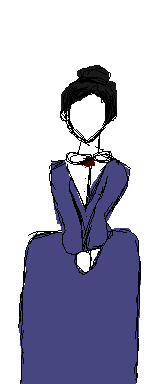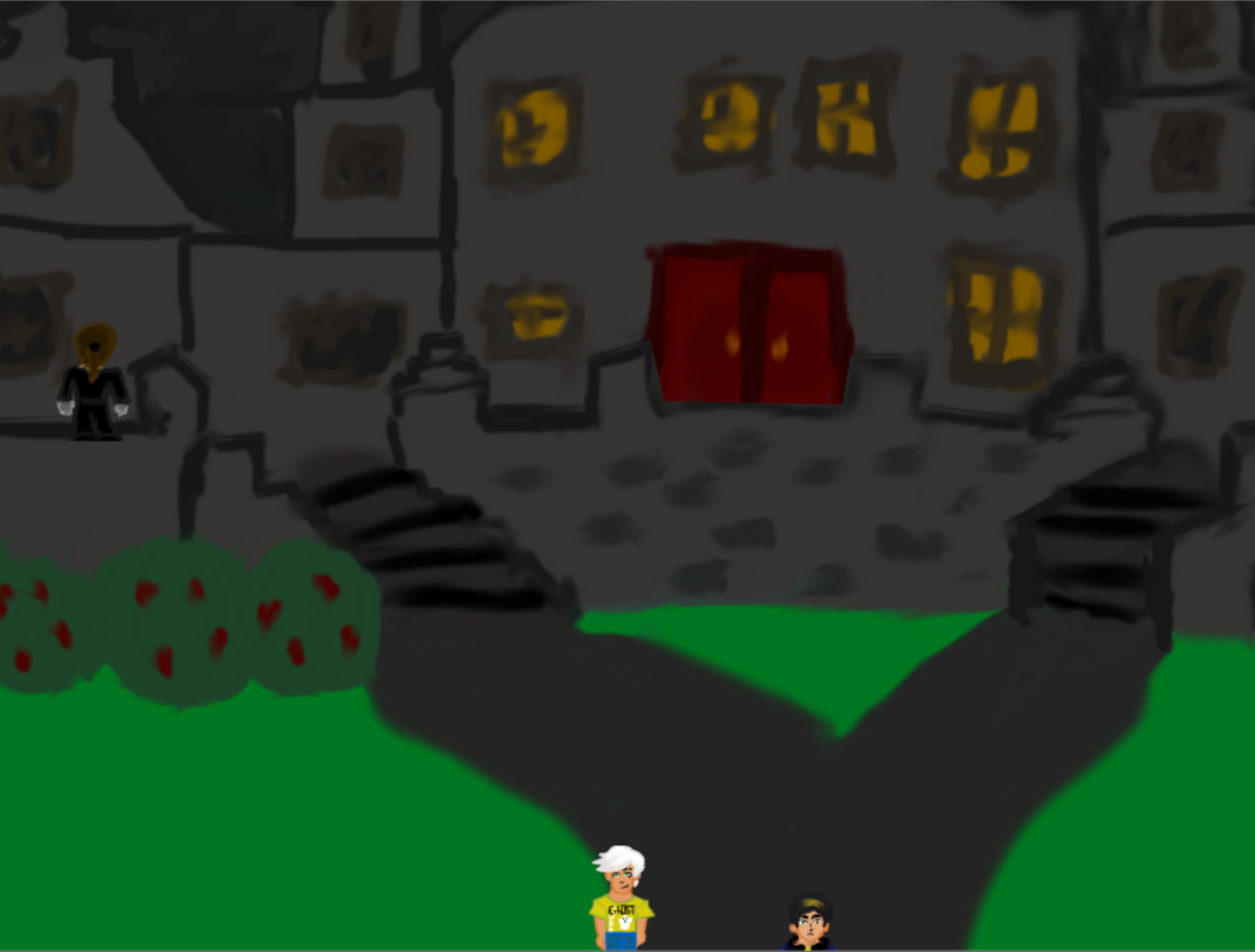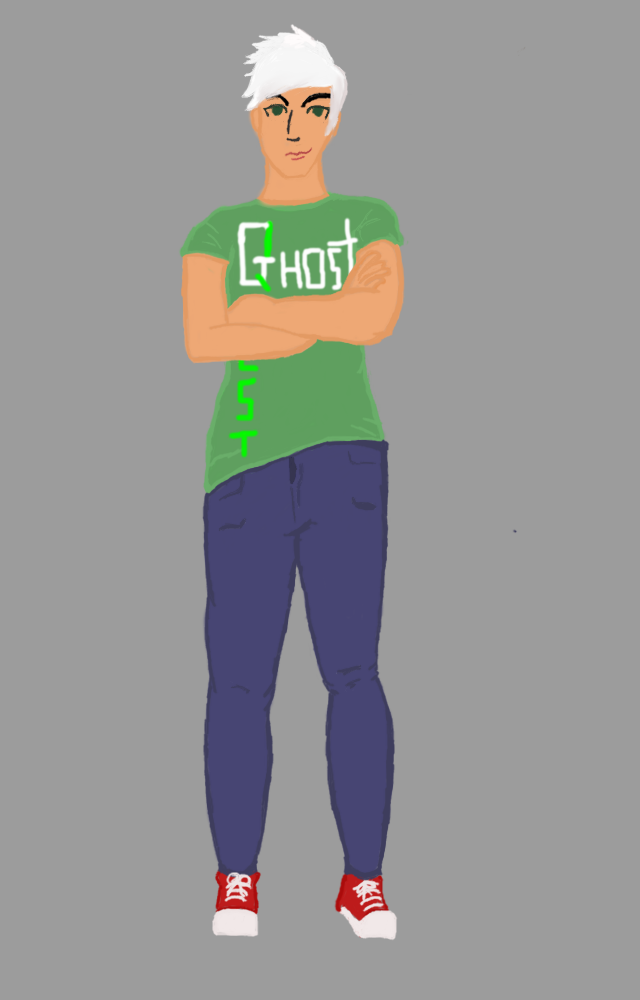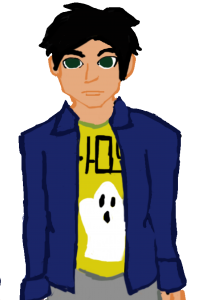
House H(a)unters takes place in a modern setting which is mostly realistic, if slightly absurd and more prone to supernatural occurrences than ours. The player takes on the dual roles of Becca and Casper Radley, twin ghost hunters who are down on their luck. In order to fund the new season of their show Becca, the snake oil salesman of the two, decides they will convince clueless rich couple Mira and Nigel Blackwood that their mansion is haunted so that she can buy it at a discount and then resell it for full value with the ghost mysteriously gone. The Blackwoods are eager to sell the house quickly, and thus give the twins seven days to prove that the ghost is gone before accepting a higher offer they have already received.
For part of the game, the player will be inhabiting the role of Becca, who is extroverted and conniving. Her levels are focused toward discussion with other characters, and manipulating them into believing in the fictional “phantoms”. Casper, who also plays the role of whatever ghost the player constructs using the clues they find during the day, is more analytical and his levels tend to be more focused on finding physical “evidence” and props he can use. For the levels in this class, Casper visits the Tawny Mill Bank and Bank Heist Museum and learns about one of the potential phantom roles he can inhabit: that of a deceased bank robber from the 1800s.
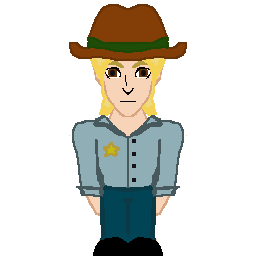
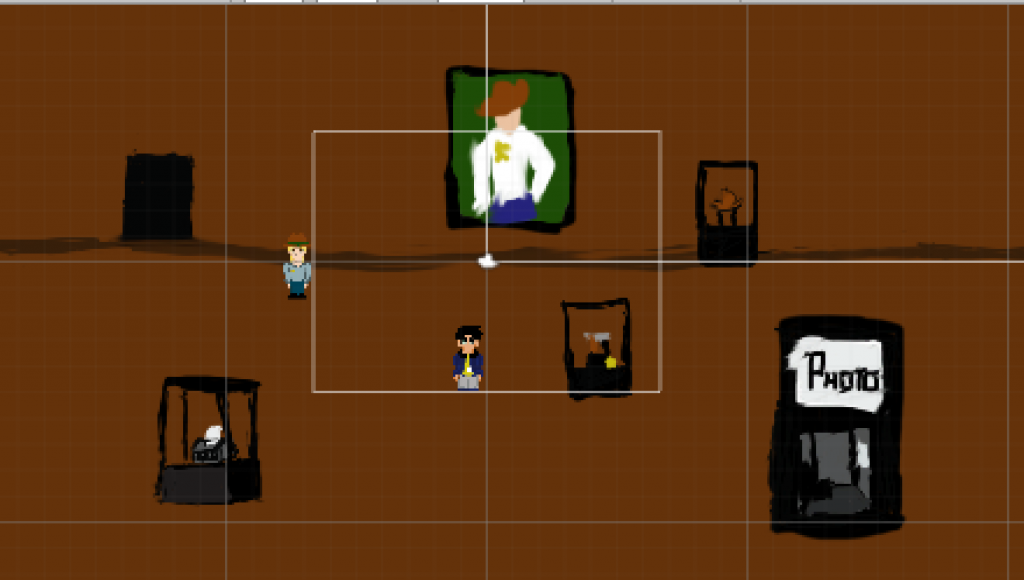
One question I’ve struggled with while working on this game for the past couple terms is: are there real ghosts, and if so how many? It was quickly obvious to me that I ought to have at least one, simply for the comedic value of showing the charlatan Radleys what true spirits can do. Then I realize that the ghosts ought to mean something. Initially I was going to have only one spirit, who would be the ghost of Mira Blackwood’s deceased brother, angry that his sister is leaving.
In this current build, there are quite a few more. Ghosts, in the town of Tawny Mill, exist in a sort of chicken and egg relationship with the living residents. Though some of the ghosts are older than the residents that they haunt, they only seem to appear as a manifestation of those citizens’ troubles. Because our own inner turmoil eventually becomes a familiar friend, the citizens of Tawny Mill don’t really notice that they are being literally haunted as well as metaphorically, but the Radleys are a fresh perspective. The more that Becca and Casper prod into people’s issues, the more ghosts appear. Therefore in constructing false ghost stories with which to “haunt” the mansion, Becca and Casper inadvertently create real hauntings. Unfortunately as the people in town are all “used” to these ghosts they don’t seem to notice, and so they act more as a hindrance to the player as they have the potential to catch and kill Casper during his nightly rounds.
The idea for this game came to me in a bit of a convoluted manner. In high school I wrote a short screenplay about a ghost who had to balance the thin line between convincing people her house was haunted to keep them away and being surreptitious enough not to be exorcised by a priest. This later evolved into a ghost hunter who died in a house, and was “fabricating” a demonic infestation in order to sell tickets to her friends’ haunted house. Eventually I learned that homeowners who wish to leave a haunted house must disclose that status to all potential buyers, and the idea evolved into this. Initially I had Casper as a real ghost, but eventually made him alive because the role ghosts played in the story transformed for me.
The radical aspects of the game tie into the way the twins interact with the world. What Casper and Becca are attempting to do is morally questionable, and a bit off the wall, but they are still complex individuals, as are the inhabitants of the town. The townies, however, exist in a heightened reality, where demonic cults and disgraced exorcists are considered normal inhabitants. Because the people they are attempting to fool seem so ridiculous, it can be easy for both the twins and the players to forget that any injury to the characters are injuries to “people”, but I aim to give the characters hidden emotional depth which, when uncovered, makes players question their previous impressions of the NPCs.
My paper prototype was for the most part a successful one. I presented three levels: the bank itself, the front entrance to the museum, and the back room of the museum which acts as a sort of shrine to the bank robbery. It became clear that I need to more eloquently elaborate the conflicts of the NPCs to give the player something more to work with on a larger scale and give them an idea of what they’re meant to be doing sooner.
The three encounters on level one are:
- Interact with bank worker Clint, who appears worried but brightens as soon as he sees Casper to tell him a bit about the bank.
- Get coffee, which can later be given to Tessa to improve her mood toward the player.
- Second encounter with Clint, where upon further prodding he reveals that he was worried because his boss scheduled him to work all this week, thereby depriving him of time to shop for an anniversary present for his husband in time for their date on Friday. In my mind, after this conversation a few set items would move slightly.
These encounters highlight a few mechanics which take place over the course of the game. The first is the introduction of a fairly straightforward NPC who seems like he is just there to give Casper information. The second showcases the gifting system, and how holding onto objects for later can result in new avenues of investigation. The third shows how, if the player chooses, they can create a greater haunting.
This third interaction also showcases the help-hinder loop. Interacting with Clint more causes Casper to learn more about the heist, but also exacerbates his emotional issues. Eventually, the “ghosts” that are haunting Clint will appear and start causing Casper trouble in his work. Therefore Casper needs to learn more about Clint as a person in order to help him overcome his troubles – which requires speaking with other NPCs, unlocking more information about the mansion and also more ghosts to haunt Casper.

Currently my game build is progressing smoothly. I have art for all three of the levels, as well as sprite sheets for the conversation sprites for Casper and Clint. I still need to complete Tessa’s. the first interaction with Clint is coded, and I have figured out how to trigger conversations with the space bar – mostly. Unfortunately, the space bar coding only works if the space bar is hit AS the player collides with the NPC. Next, I need to both code for multiple conversations and edit the sorting script to allow for multiple objects having it, both of which will be made easier with tag implementation, and allowing the space bar to be pressed at any point during collision.
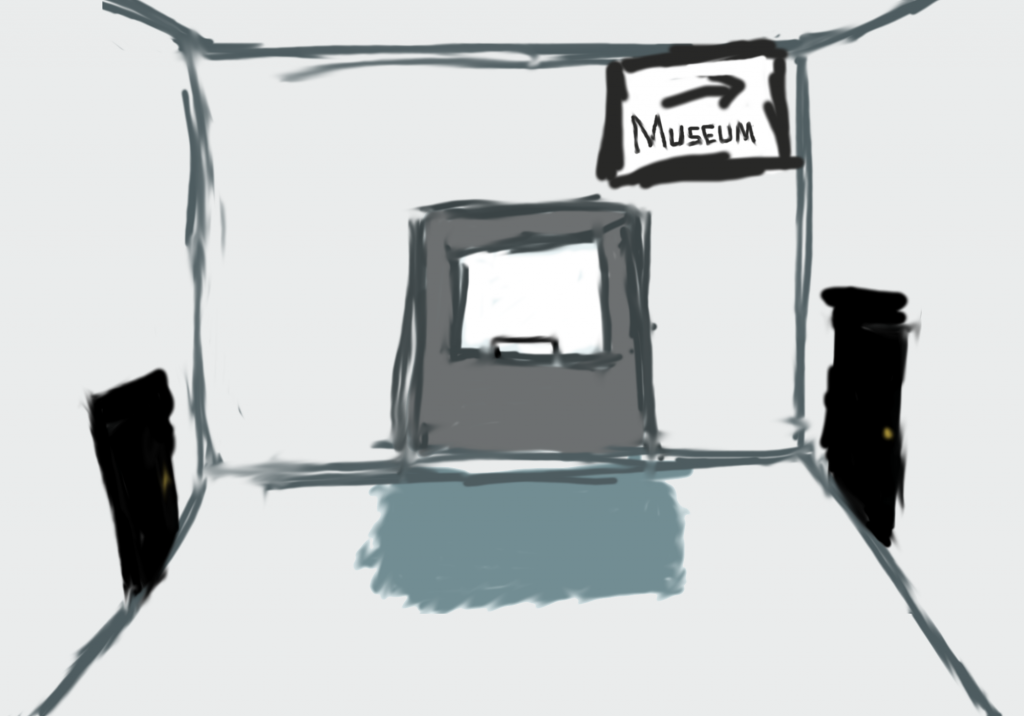
I try to use limited color palettes in all of the levels for this game. For the mansion levels, I limited myself to dark greys, browns, reds, and greens. These all feel like very “haunted”, old colors. For this bank level I went with lighter blues out front and then dark browns in the back of the museum to emphasize both that it is a “dark” part of the past and also much older – brown reads as an old color to me due to its connection with natural materials. I picked light blue for the front as blue, being a “soothing” color is a common color for professional buildings, and it is also the signature color for many banks. Both of these palettes lack bright greens, as this is the color of the Radleys’ shirts and I wanted them to pop a bit in the scenery.
Each character on the levels has one item of clothing which ties them to the environment. For the mansion, this is a deep blood red. For the bank this is light blue. Tessa also has a green hat brim, which ties her to the painting of her great grandfather Sheriff Wycome.
For these levels, I maintained a mostly linear character design for the first two rooms, followed by a large open room with interactable objects spread throughout. The first two rooms are the public fronts: the bank directs you to the door and to Clint in a straight line so that people can go about their business quickly, and the front of the museum directs the player down a line of interaction to Tessa. In the third room, where Casper encounters history, he is confronted with a bit more open world, as the past tends to be a lot less neat than the present makes it seem.
Interactable objects and NPCs are all sharp, which makes them obvious against the smudged background of the rest of the map. I resisted going into high levels of detail in the backgrounds, as I don’t want the game to become a pixel hunt for important items. Having the background blurry showcases the situation of the people in the town: because they have lived so long and become so used to their lives, everything has sort of settled into a haze. They cannot see the ghosts, or the objects which are important to solving their crises, or that the Radleys are conning them, even if those things are right in front of them. The Radleys and the players, however, can see what is important in the world quickly because they are looking at them with fresh eyes.

